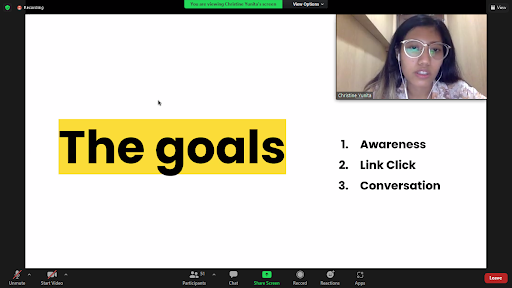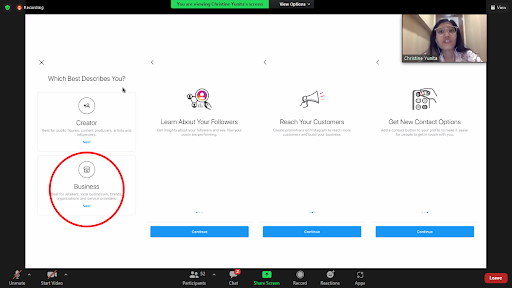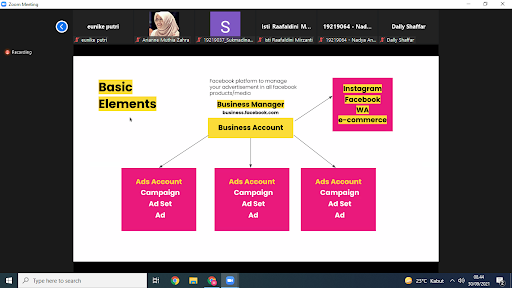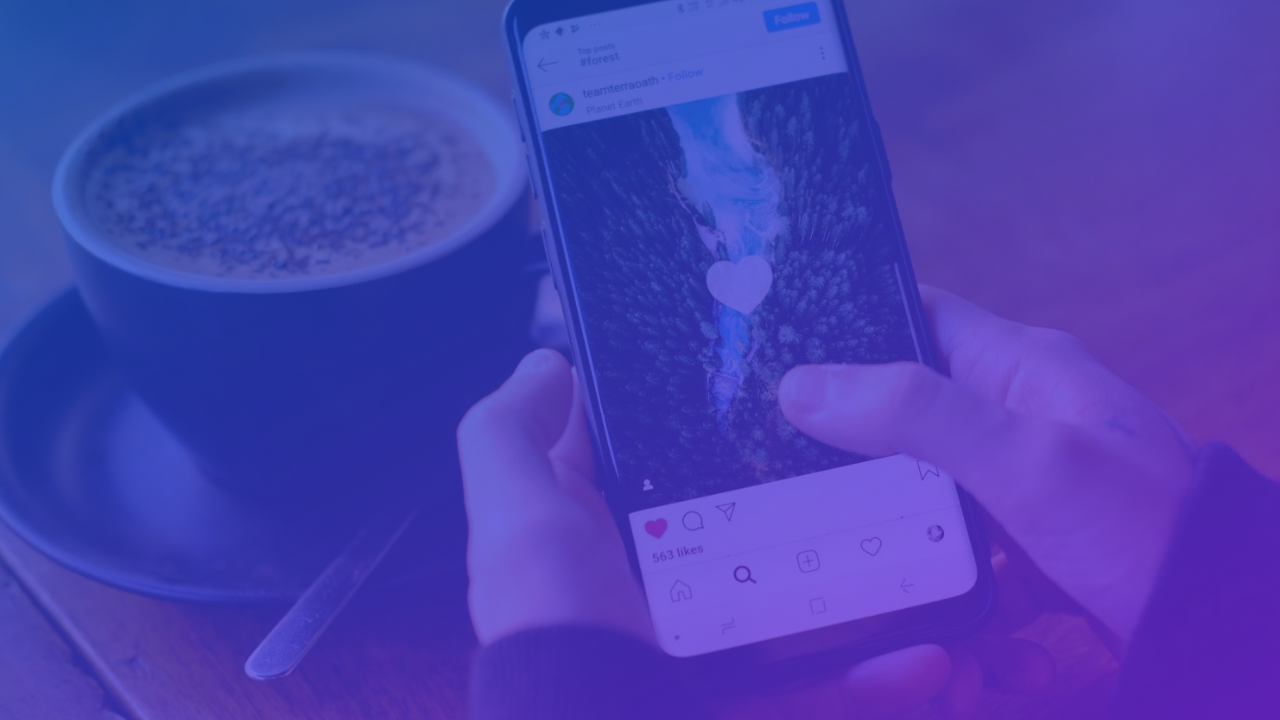Currently, the features on Instagram are more sophisticated. Instagram has provided special advertising features that we usually know as Instagram ads to promote products for business. So, how can someone take advantage of this feature?
Christine Yunita, the founder of Nanas Media and Ideahive, shared tips on using Instagram ads and other integrated features in the Guest Lecture for the MK4001 Start-up Business Practice course under SBM ITB Entrepreneurship Major on Thursday (30/9/ 2021).
 With a graduate background in visual communication design, Christine engaged in a marketing and branding career, especially activities related to digital social media. In 2017, she founded Nanas Media, an agency engaged in digital growth, particularly in marketing and advertising contexts, specializing in social media content and design, digital marketing content, digital campaigns, and application marketing.
With a graduate background in visual communication design, Christine engaged in a marketing and branding career, especially activities related to digital social media. In 2017, she founded Nanas Media, an agency engaged in digital growth, particularly in marketing and advertising contexts, specializing in social media content and design, digital marketing content, digital campaigns, and application marketing.
The guest lecture was opened by explaining the following three purposes of Instagram ads.
- Awareness; invite users to recognize the advertised product or brand,
- Link Click; invites the user to click on the given follow up link,
- Conversation; get users to interact with advertisers.
These goals form a coherent flow. After arriving at a user’s Instagram, they are expected to visit the advertiser’s profile. Furthermore, users are expected to become potential consumers by visiting websites and e-commerce sites as sales media and interacting with advertisers through direct message features or other social media applications, such as WhatsApp.

- An Instagram Business Account. To make it, we can first create a Facebook account. From there, we can create a page connected to Instagram that will be used as a means of advertising.
- Promotional design. To create an ad design, Christine suggested using Canva, Figma, or Photoshop. Promotional designs must contain clear messages, attractive captions, and only 3-5 hashtags. In addition, an advertiser must also know how to compose advertisements with soft selling and hard selling strategies.
- Follow-up directions. Once users get our ads, what can they do next? Advertisers can place links to direct potential customers further by including links to other websites or channels. To make linking easier, advertisers can use the help of a connector page (e.g., linktree) to combine several links at once. Long and ‘complicated’ links can be made simpler and more attractive with the help of the bit.ly platform.
- Payment method for advertising. Usually, Instagram ads can be paid in several ways, one of which is using a credit card.
In addition, it is also crucial for advertisers to choose an audience or advertising target. Audiences can be selected based on name, location, interests, sex, and gender. Make sure we choose the right target, according to the products offered.
Once we are ready to advertise, there are two ways to start using Instagram ads. Advertisers can use the ‘promote’ button on the post that would like to be advertised or use the ‘promote’ button on the Instagram profile.
Then, how can we assess the effectiveness of using Instagram Ads? There are several methods, such as seeing the growth of social media, interaction, and a method called cost per click.

“You have to experiment with the contents for your brand. Try it one by one, then you will know what is the best one for you,” said Christine.
In addition to Instagram ads, Christine closed the guest lecture by explaining Facebook’s advanced features, namely the business manager account where business people can create a unique advertising account and manage the following three stages of advertising.
- Campaign: set advertising objectives in the context of marketing.
- Ad Set: Set the target audience profile, advertising schedule, and budget to spend.
- Ad: commonly called ‘Ad Creative,’ this feature concerns the content and creation of the intended ad.




